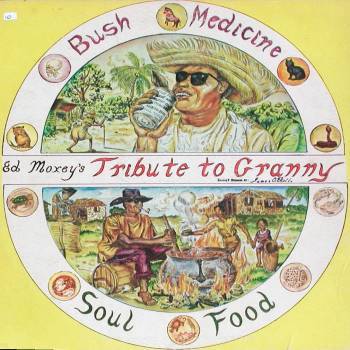The music of Ed Moxey fits into the category of rake 'n' scrape. There are few bands that perform in this authentic style, but the few that do, always provide lots of interesting variations. The music is said to have its roots in Cat Island, but we know that some of the other Islands like Ragged Island, and Abaco, play in this genre also. When one looks at the instrumentation, the use of the carpenters saw replicates the family of percussion instruments called scrapers. The sound of the scraper is the main characteristic of rake 'n' scrape music. Evidence supports that scrapers are categorized in the idiophone family, and the sound produced are actually a series of short taps when a stick is drawn over a notched or ridged surface. In the case of the saw, the use of a metal object such as a butter knife is commonly used. Additionally, these instruments are among the most primitive of all, dating back as far as the Stone Age. Ancient bone scrapers, were used by the Aztecs, Hopi Indians of the Americas, and even the Australian, Cuban, Chinese, and more recently in the 1950's with the "skiffle", a music craze that was popularized in the 1920's and re-introduced by singer and banjo player Lonnie Donegan in the mid-1950s using washboard and other percussion instruments. The influence of this music could have very well found its way to the Bahamas. Ed Moxey along with other popular Bahamian rake 'n' scrapers "Lassie Doh and The Boys" and "Chippie & The Boys" were most instrumental in preserving this art form in The Bahamas. Accompanying the saw you would find the goombay drum. The interaction between the saw and drum is most peculiar. I could only describe the style of drumming as sudden outburst of speech. Like most music of African origin, the ad-lib styles that exist in music such as jazz, blues, and Negro spirituals are quite prevalent. The example following is classic rake 'n' scrape. Note the irregular accents of the goombay drum during this performance. Usually accompanying this music is the dance called the Quadrille. The vogue in England and America by the 1700's was called the cotillion, which gave rise to the quadrille. A “set” or group of couples dances this flirtatious and social dance. This style of dance also holds close kinship to the square dance found in North America. The music is harmonically very diatonic, with intricate rhythmic variations carried out by the goombay drum. Most rake 'n' scrape songs contain humor and portray a happy time and high spirit for dancing.

